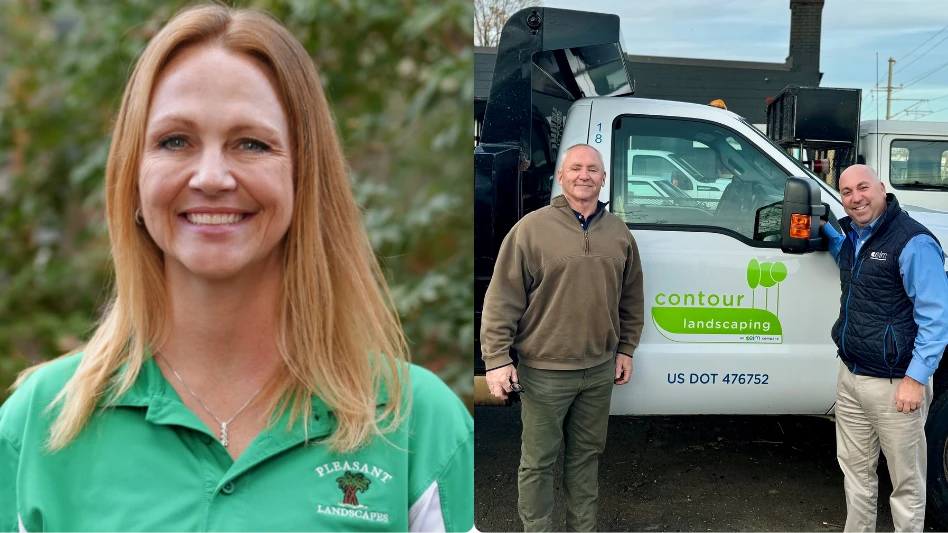 One of Steve Hoogenakker’s competitors had just run into some problems with a property management company. So Hoogenakker, vice president at Taylor Made Landscape in Minneapolis, saw an opportunity and jumped on it.
One of Steve Hoogenakker’s competitors had just run into some problems with a property management company. So Hoogenakker, vice president at Taylor Made Landscape in Minneapolis, saw an opportunity and jumped on it.
But instead of cold-calling the company, he sat down at his computer and sent the company’s vice president and two property managers a direct message through LinkedIn: “I heard you were looking for new vendors for this spring. We still have time to analyze your site.”
Instead of a blind call (which likely wouldn’t get him through to the VP) or an e-mail message (which could get routed to the spam folder), Hoogenakker’s message went right through the social network and to the three decision makers.
“The key to this whole thing is to just be helpful,” says Hoogenakker, explaining his social media strategy is more about being useful to his clients and not a hard sell. His 6-year-old company does only commercial work, servicing townhomes and other managed properties. He says LinkedIn and a host of blogs he maintains help him stay in front of his clients.
“This morning, I was out bidding a big condominium place. I’ve never talked to the property manager’s boss before, but he’s on my LinkedIn group. I got a nice condo lead there,” he says. “I got another one with four apartment buildings that came from my contacts on LinkedIn.”
LinkedIn and other social networking and social media tools like Facebook, Twitter and blogs, are increasingly seeing activity from businesses as companies search for new ways to reach out to customers, and as customers seek out new ways to find companies.
Selling by Not Selling
Hoogenakker operates a group on the business-oriented social networking site specifically for property managers, and contributes to two others. He compiles articles about general business topics – some of which he writes and others he receives from Google alerts – and sends them to his contacts. These articles keep his name – and contact information – in front of the people who make the decision to hire his $500,000 a year, eight-employee firm.
“It’s mostly lead generation at this point,” he says, adding he spends about 10 minutes a day working on the site. “If I’m writing articles, they’re getting posted on different sites. If you’ve already got a couple articles in the can, why not get it on the Web?”
Social networks like LinkedIn and other social media blogs can offer businesses a new, low-cost way to reach customers. They allow a company to publish information – articles, videos or podcasts – and share them with a large number of people, who can then comment on them and share them easily with more people.
|
Here are some tips from industry experts on how to best take advantage of social media marketing. There are a lot of options out there. Don’t jump into all of them at once. Choose one venue – a blog, a Facebook page – and do it well before you move on to another. You don’t have to publish constantly, but you have to publish consistently. Stay involved. Social media work because they allow users to spread useful information quickly. Be a team player. Don’t saddle one poor office worker with all the responsibility. Put a few people in charge of your social media efforts. |
“It really is an outstanding way for small businesses to have an impact in their marketing campaigns,” says Bill Sledzik, a professor of public relations at Kent State University in Kent, Ohio. Landscape contractors can give their clients valuable information – how to protect shrubs from a cold snap, tips on ways to save money in the landscape, etc. – and position themselves as experts in the minds of their clients.
And while social media might not have yet caught on throughout the entire green industry – 62 percent of respondents to a Lawn & Landscape survey say they don’t use social media marketing tools – the tools can be useful. The majority of contractors using social media – 71 percent – use them to build consumer relationships and increase their number of customers. Thirty-five percent use the tools to network with other contractors, and 17 percent use them to find employees.
And these tools are increasingly popular among consumers. According to the Pew Internet & American Life Project’s December 2008 tracking survey, adult internet users who have a profile on an online social network site have more than quadrupled in the past four years – from 8 percent in 2005 to 35 percent.
Facebook now says it has 300 million users; the fastest-growing demographic is people older than 35.
 In the company’s first e-newsletter, CEO Jason Cupp wrote a letter to customers in which he mentioned a local Mexican restaurant. He goes there every Friday with some friends and clients, and he included a link to their Web site. Thirty percent of the newsletter recipients clicked on that link. In the company’s first e-newsletter, CEO Jason Cupp wrote a letter to customers in which he mentioned a local Mexican restaurant. He goes there every Friday with some friends and clients, and he included a link to their Web site. Thirty percent of the newsletter recipients clicked on that link.The next time Cupp saw the restaurant’s owner, he said customers had been coming in and mentioning they heard about his place through Highland’s e-newsletter. “Don’t you think Kevin is going to be talking about our business in a different way now? Was that my intent? No. Did it happen that way? Yes. Am I happy that it did? Yes,” Cupp says. “I’m not just some guy out with his buddies drinking beers and eating tortilla chips. Those are the neat things you get to do and some of the byproducts you don’t realize as you’re engaging in these social media-type things.” |
But Sledzik cautioned against companies thinking of their blog or Facebook fan page as just another way to advertise their services. “It’s not necessarily a sales pitch,” he says. “And that’s part of the challenge that we have in getting people to embrace social media.”
Changing Customers' Minds
Jason Cupp, CEO of Highland Outdoor and Southwest Greens of Kansas City, and his staff use Facebook, Twitter, a blog and text messages to stay in front of their clients and bring them valuable information.
“We define it as an opportunity for us to connect with people who we’re doing business with – clients, employees, potential employees – and do it in a unique way,” Cupp says.
And as for taking time from his day, Cupp says he spends about 10 hours a week on the blog and other social media. But, they are an extension of things he was doing – Twittering, blogging – already. “I can do Twitter, Facebook and blog all from my iPhone,” he says.
Cupp says the Highland Outdoor site (www.highland-outdoor.com/blog) gets between 10,000 and 15,000 hits each month, and much of that traffic comes from the company’s blog, Outdoor Connect. The site covers topics like upcoming winter weather, news about the company and tips for how to save money around the house. The blog, and the galleries of project photos, draw much of the traffic to the company’s site, Cupp says.
“It’s not the ‘About Us’ page or our staff bios … it’s our blog,” he says. “Clients are using that to make a deciding factor on whether to hire us or not. We’re getting business we wouldn’t have gotten otherwise.”
The author is associate editor of Lawn & Landscape. He’s on Twitter at #lawnlandscape.

Explore the October 2009 Issue
Check out more from this issue and find your next story to read.
Latest from Lawn & Landscape
- LawnPro Partners acquires Ohio's Meehan’s Lawn Service
- Landscape Workshop acquires 2 companies in Florida
- How to use ChatGPT to enhance daily operations
- NCNLA names Oskey as executive vice president
- Wise and willing
- Case provides Metallica's James Hetfield his specially designed CTL
- Lend a hand
- What you missed this week





